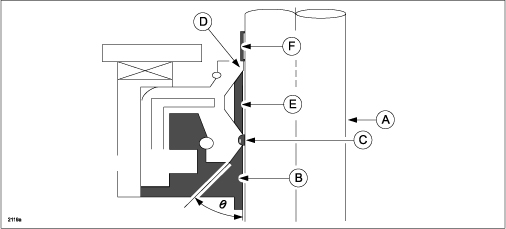| “This site contains affiliate links for which OEMDTC may be compensated” |
MULTI-MODEL – SHOCK ABSORBER REPLACEMENT GUIDELINES
APPLICABLE MODEL(S)/VINS
| 1999-2009 B-Series | 1999-2002 626 | 2004-2016 Mazda3 | 2007-2012 CX-7 | 2016 CX-3 |
| 1999-2003 Protege | 2000-2006 MPV | 2006-2015 Mazda5 | 2007-2016 CX-9 | |
| 1999-2005 Miata | 2001-2011 Tribute | 2003-2016 Mazda6 | 2006-2016 MX-5 | |
| 1999-2002 Millenia | 2011-2014 Mazda2 | 2013-2016 CX-5 | 2004-2011 RX-8 |
Some customers may complain of signs of oil on the struts or shock absorbers.
In most cases the oil that is present is normal, and a result of the oil that remains on the shaft during the normal sweeping process of the shaft seal.
Follow the inspection guidelines to determine if the condition is a result of the normal sweeping process or a failure of the shaft seal.
SERVICE INFORMATION
- Inspect the shock absorber by using the following guidelines to determine if shock absorber replacement is necessary or not.
- If it is oil seepage, the shock absorber does NOT need to be replaced.
- If it is oil leakage, the shock absorber needs to be replaced.
NOTE: Warranty claims submitted for oil seepage shock absorbers will be denied or subject to debit.
CAUSE OF OIL SEEPAGE
Oil seepage is caused by the following factors and is not a problem:
- A small amount of oil seeps outside through the dust lip during normal operation.
- The oil film thickness is uneven due to production variation of rod and seal.
When the rod (A) receives input from the road and extends upward, most of the oil (B) on the rod is scraped off by the main lip (C) and some remains inside the dust lip (D). When the rod extends further, then most of the remaining oil (E) on the rod is scraped off by the dust lip, and a small amount of oil seeps out (F).
CAUSE OF OIL LEAKAGE
Oil leakage is caused by the following factors and is a problem:
- The rod is damaged (dent, etching, rust, or foreign substance).
- The lips are damaged.
| SYMPTOM | DESCRIPTION / REPLACEMENT CRITERIA |
STRUT
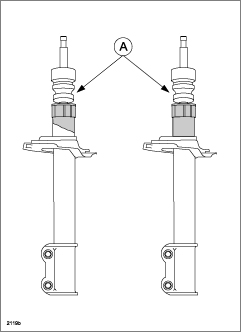 |
Action: Clean and dry the unit as much as possible. NO REPLACEMENT NECESSARY. |
SHOCK ABSORBER WITH SPRING SEAT
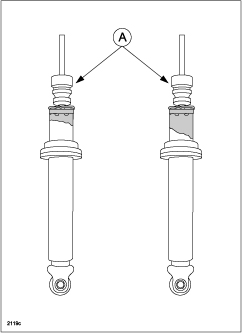 |
Action: Clean and dry the unit as much as possible. NO REPLACEMENT NECESSARY. |
SHOCK
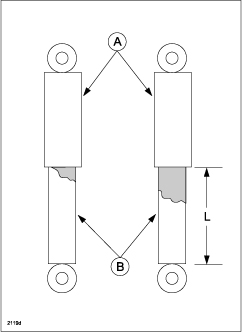 |
Action: Clean and dry the unit as much as possible. NO REPLACEMENT NECESSARY. |
STRUT
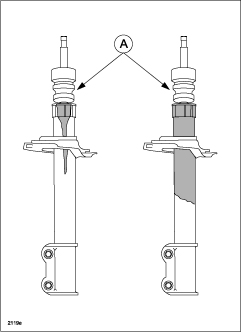 |
Action: REPLACE THE UNIT. |
SHOCK ABSORBER WITH SPRING SEAT
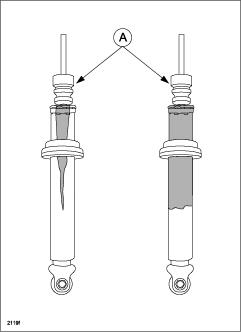 |
Action: REPLACE THE UNIT. |
SHOCK
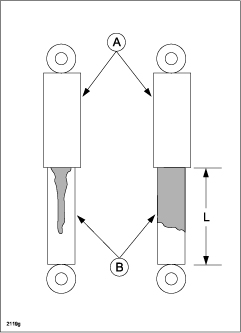 |
Action: REPLACE THE UNIT. |
